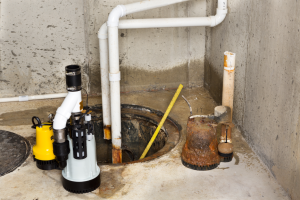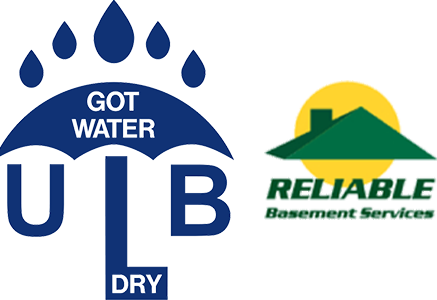
When it comes to protecting your home, one area that often gets overlooked is the basement. However, a damp or flooded basement can lead to a host of problems, ranging from structural damage to mold growth and much more. However, by investing in the right components — such as a sump pump — homeowners can make sure their basement remains dry and free from water damage.
Are you interested in learning about some of the most notable components that make up a residential sump pump? This basement waterproofing company in Northlake, Illinois is going to review them below.
Components of a Residential Sump Pump
A sump pump is a key component of most basement waterproofing systems in the Northlake area. It is designed to remove water that accumulates in the sump pit, which is a hole dug in the basement floor. Here are some of the essential components that make up a sump pump:
1. Sump Pit
The sump pit is the container that collects and holds the water that enters the basement. It is typically made of durable materials, such as plastic or concrete. The size of the sump pit will depend on the amount of water that needs to be pumped out and the size of the basement. A professional basement waterproofing company in Northlake, Illinois can assess your property to determine the right size.
2. Pump
The pump is the heart of the sump pump system. It is responsible for removing the water from the sump pit and pumping it out of the basement. The pump is usually electrically powered, and it has a float switch that activates it when the water reaches a certain level within the pit.
3. Check Valve
The check valve is an important component that prevents water from flowing back into the sump pit once it has been pumped out. It is installed on the discharge pipe and ensures that the water is directed away from the basement.
Understanding How a Sump Pump Works
To fully understand the importance of the components mentioned above, it’s essential to understand how a sump pump works. When water enters the basement, it flows towards the lowest point, which is the sump pit. As the water level rises, the float switch on the pump is triggered, which activates the pump. The pump then sends the water out of the pit and away from the house through the discharge pipe. Once the water level in the pit decreases, the float switch turns off the pump. This process continues automatically, ensuring that the basement stays dry.
Different Types of Sump Pumps
Most basement waterproofing companies in Northlake, Illinois offer various types of sump pumps, and the choice depends on factors such as the size of the basement and the amount of water that needs to be pumped out. The two main types of sump pumps include:
1. Submersible Sump Pumps
Submersible sump pumps are installed inside the sump pit and are designed to be completely submerged in water. They are typically more discreet and quieter than pedestal sump pumps. Submersible pumps are typically more powerful and can handle larger amounts of water.
2. Pedestal Sump Pumps
Pedestal sump pumps are installed above the sump pit and are not designed to be submerged in water. They are more visible and take up less space in the pit. Pedestal pumps are generally more affordable than submersible pumps, but they may not be as powerful.
Looking for a Basement Waterproofing Company in Northlake, Illinois?
Are you searching for a reliable basement waterproofing company in Northlake, Illinois that can help you pick out and install the right sump pump for your home? If so, our team at ULB-DRY Waterproofing would be happy to help. From sump pump installations to foundation crack repairs, our team does everything we can to make sure your basement stays dry and free from water damage. Contact us today to schedule an appointment.





